|
03.06.2018 15:00:00
|
Bruker Introduces scimaX™ MRMS for Novel Phenomics Workflows, and Further Enhances the timsTOF™ Pro for PASEF Proteomics at ASMS
SAN DIEGO, June 3, 2018 /PRNewswire/ -- At the 66th ASMS Conference, Bruker announces innovative mass spectrometry products and workflows for breakthroughs in life-science research, in clinical research and large-cohort validations in phenomics and proteomics, in novel biopharma applications and in applied toxicology and forensics markets.
Frank H. Laukien, Ph.D., commented: "We believe that our new products and novel workflows shown at ASMS 2018 will fundamentally change life-science research by mass spectrometry. The new scimaX system is designed to enable high-throughput phenomics by extreme resolution magnetic resonance mass spectrometry. The revolutionary timsTOF™ Pro with online PASEF is already opening new research fields in ultra-high sensitivity and high-throughput proteomics. I am convinced that both technologies will play important roles in enabling true clinical phenomics and clinical proteomics, which over time may well have a similar impact on the practice of medicine as next-generation sequencing."
A. Phenomics and Proteomics Innovations
Bruker introduces the game-changing scimaXTM Magnetic Resonance Mass Spectrometer (MRMS). The scimaX MRMS delivers industry-leading mass resolution exceeding twenty million (R > 20,000,000), in a smaller footprint and without the need for any liquid cryogens. Bruker's novel conduction-cooled Maxwell™ magnet technology essentially makes the magnet 'invisible', and allows the use of highest-performance MRMS in standard mass spectrometry laboratories.
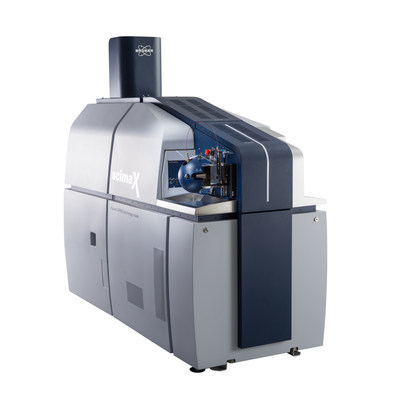
This extreme MRMS resolution allows isotopic fine structure (IFS) analysis to easily determine exact elemental formulae in complex mixtures, without any chromatography. Using this unique capability, the scimaX enables the novel workflow of flow injection analysis (FIA-MRMS) for large cohort, high-throughput phenomics studies with up to 200 samples per day. Biopharma users can perform advanced native protein and fragment-based drug discovery studies using MRMS, which has recently been called a "bona-fide" platform for native protein analysis in the scientific literature. With an optional MALDI source, pharma customers have demonstrated the exceptional capabilites of MRMS for label-free MS imaging for PK/PD studies in drug development.
Dr. Steve Gross, Professor at Weill Cornell Medicine, said: "Bruker's new scimaX MRMS system is a game-changer for ultrahigh-resolution mass spectrometry. By eliminating the burden and costs of liquid cryogen fills and lab renovations as a barrier to instrument installation, scimaX is available to any MS lab in need of maximal mass resolution to answer high-impact scientific questions."
Bruker's revolutionary timsTOF™ Pro for next-generation proteomics uses four dimensions (4D) of separation in this unique nLC-TIMS-MS/MS instrument. It combines proprietary, dual Trapped Ion Mobilitiy Spectrometry (TIMS) using the just published online PASEF method1, which has the potential to dramatically improve high-throughput and ultra-high sensitivity proteomics. The timsTOF Pro, has been further enhanced for ASMS, and is now also compatible with MaxQuant v1.6.2.0, and PEAKS Studio v8.5 for protein identification (ID), label-free quantitation (LFQ), and tandem mass tag (TMT) workflows. Rapid development by third-party software collaborators is enabled by Bruker's open file format, and several additional groups are developing timsTOF Pro compatibility into their software suites.

Also new is full integration with the Evosep One (www.evosep.com) separation device with Bruker's Hystar LC/MS control for high-throughput clinical proteomics of up to 200 samples per day. This novel combination delivers superb sensitivity (50 ng HeLa) and high throughput for LFQ of ~1,200 proteins in only ~5 minutes.
Dr. Tadashi Yamamoto, Director of the Biofluid Biomarker Center (BBC), and Emeritus Professor at Niigata University in Japan, stated: "I was impressed with the sensitivity of the timsTOF Pro PASEF workflow. It could routinely identify a low-level C-peptide in urine that other vendors could not easily identify. This critical advance in sensitivity was a key factor for my decision to introduce this new technology in my laboratory."
Dr. Gary Kruppa, Bruker's VP of Proteomics, added: "We are pleased that the high sensitivity PASEF workflow is being validated by our proteomics customers. It is also attracting biopharma applications for host cell protein (HCP) characterization, as higher sensitivity allows for the identification of more proteins that were previously not identified. Given its industry-leading robustness due to its orthogonal source and dual-TIMS funnel, the timsTOF Pro has the potential to become the preferred workhorse for high sensitivity HCP characterization in biopharma."
Bruker's ASMS 2018 introductions also include the spotON LC-MALDI spotter for automated, wizard-based workflows that include post-column matrix addition, supporting both nano and capillary HPLCs. The spotON LC-MALDI facilitates the use of the complementary MALDI technique in biopharma applications, such as for sequencing by non-conventional proteolytic enzymes, for the determination of disulfide bonds, for glycopeptide identification, for top-down sequencing of membrane proteins, and for the identification of protein clips through N-and C-terminal sequencing. The spotON has superior carry-over performance, and includes an optional nitrogen mask for spotting in an inert environment.
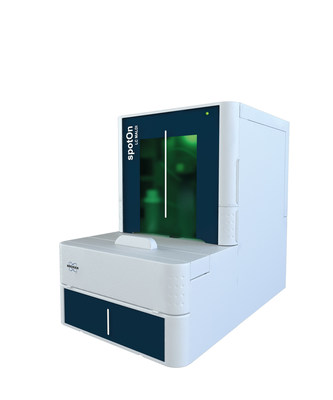
B. Life Sciences and Translational Mass Spectrometry Imaging
Bruker introduces SCiLS Lab, version 2019, with the key addition of a quantitation module for mass spectrometry imaging (MSI) workflows. MSI has the advantage that it is both label-free and spatially resolving, in contrast to other established quantitative methods. In drug development and toxicology studies, SCiLS Lab's new user-friendly software workflows for MSI quantitation will enable researchers to easily quantify target molecules directly from tissue.
Dr. Charles Pineau, Research Director at IRSET, University of Rennes, France, and head of the Protim Facility, commented: "We use MALDI imaging in the field of testicular pathophysiology and reproductive toxicology to study the mechanisms of action of environmental toxicants on the male genital sphere, or to identify proteins which play a key role in sperm production and maturation. My lab has been using SCiLS Lab for discriminative analysis for years now. The new quantitation module enables us to absolutely quantify the penetration of target molecules in our toxicology studies."
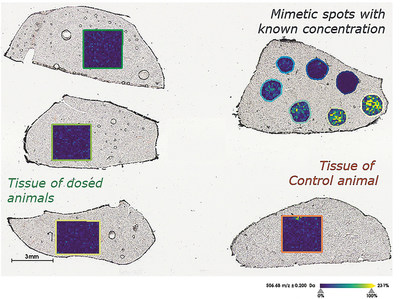
SCiLS Lab integrates with SCiLS Cloud for workflows in distributed teams from different scientific disciplines to work seamlessly with the same data. Since the same tissue sections can be stained after MALDI measurement, MALDI Imaging and histology are fully compatible and can be easily superimposed. SCiLS Cloud's molecular histology workflow allows sharing superimposed microscopy images with clinical partners with access for histological annotation. The engine behind this innovative collaborative platform is SCiLS Lab, the worldwide leading software for analysis of MS imaging data from all major MS vendors, including Bruker's FLEX series and MRMS. More…
C. Metabolomics Profiling for Life-Science and Translational Research
Bruker introduces its fourth-generation software for metabolomics and lipidomics research, MetaboScape® 4.0, powered by MRMS aXelerate™, which incorporates a 3-tier confidence engine to allow confident assignment of molecular formulae. This new version supports handling large studies of > 1000 samples in phenomics research. Based on the unbeatable, across-the-mass range, ultrahigh resolution of the scimaX MRMS, the aXelerate workflow goes beyond LC throughput, complexity and robustness limitations to analyze approximately 200 samples a day.
The T-ReX 4D algorithm supports timsTOF by enabling processing of 4D TIMS-separated LC-MS/MS data and gives access to exact Collisional Cross Section (CCS) values. The extended Annotation Quality Scoring includes these values for higher confidence in compound ID, including a sophisticated machine learning algorithm, which calculates theoretical CCS of lipids and compares these to measured values for increased confidence in lipid identification.

Professor Lloyd Sumner, University of Missouri, Columbia, MO, said: "The innovative technology of our timsTOF Pro instrument has enabled us to compile a library of CCS values for many plant metabolites. This additional CCS information can be searched, and ultimately increases our final confidence in metabolite identifications."
Bruker also introduces a solution for non-targeted metabolomics profiling, called T-ReX LC-QTOF. This total solution comprises the 'phenomics workhorse' impact II UHR-QTOF, an Elute UHPLC, T-ReX Metabolomics column kit (RP), software (MetaboScape 4.0 with TASQ 2.0) and high-quality content (standard operating procedures for sample prep and method setup, as well as updated Bruker HMDB Metabolite Library 2.0, including retention time).
Professor Liang Li, University of Alberta, Edmonton, Canada, commented: "We are delighted to have collaborated with Bruker to produce the comprehensive "T-ReX LC-QTOF solution". This complete, out-of-the-box solution provides the basis for high confidence identification of relevant known endogenous metabolites, and enables setting these into a biological context using pathway mapping. This solution will provide researchers a head start in non-targeted metabolomics for typical research samples like urine or plasma." More…
D. Applied Toxicology and Forensics
Bruker announces an enhanced version of TargetScreener HR 3.1, encompassing an additional 600 compounds in the field of veterinary drugs, new psychoactive substances and pesticides, resulting in a database exceeding 2,800 compounds. All versions of TargetScreener contain TASQ™ (Target Analysis for Screening and Quantitation) software to provide a unified platform for automated screening and quantitative applications in forensic, food and environmental safety markets. TASQ uses a unique method for providing positive identifications from the highly curated database, which results in minimal false positives and false negatives, while simultaneously performing seamless quantitation.
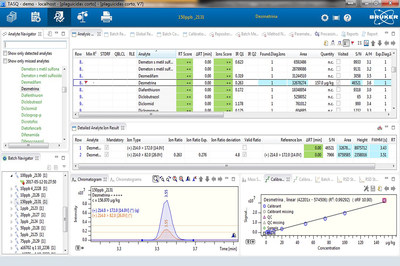
Prof. Dr. Volker Auwärter and Dr. Laura Huppertz of the Department of Forensic Toxicology at the Institute of Forensic Medicine, University of Freiburg, Germany, commented: "TargetScreener has proved invaluable in enhancing our productivity due to the automation and the intuitive nature of TASQ. The approach minimizes false positives by combining the high mass accuracy of the impact QTOF with advanced identification and confirmation criteria. The instrument's sensitivity ensures we capture minor components even when co-eluting with highly concentrated components within the human samples we analyze, including hair samples. Furthermore, the dynamic range allows us to receive a realistic estimate of the concentrations at the same time. Regarding the cases we have to solve, and the sometimes limited sample amounts, the possibility of retrospective data evaluation is of great value to us, especially in cases involving new psychoactive substances."
Howard Taylor, PhD, Laboratory Directory at Addictions Labs of America in Brentwood, TN, stated: "Our laboratory purchased 14 Bruker compact QTOFs because of their reliability and ease of use. The TASQ software is very intuitive and extremely user friendly. Quantitation is presented with great flexibility and the user can quickly identify outliers. The TASQ software makes it easy to add new analytes for retrospective searches of new drugs." More…
Please join us at Bruker's ASMS Booth #715 throughout the conference, and at our press conference on Monday, June 4, 2018, at 8:00 am PDT at the Hilton San Diego Bayfront, 2nd floor, Indigo CG.
For more information: www.bruker.com/events/2018/mass-spectrometry/asms-2018
About Bruker Corporation (NASDAQ: BRKR)
Bruker is enabling scientists to make breakthrough discoveries and develop new applications that improve the quality of human life. Bruker's high-performance scientific instruments and high-value analytical and diagnostic solutions enable scientists to explore life and materials at molecular, cellular and microscopic levels.
In close cooperation with our customers, Bruker is enabling innovation, improved productivity and customer success in life science molecular research, in applied and pharma applications, in microscopy and nanoanalysis, and in industrial applications, as well as in cell biology, preclinical imaging, clinical phenomics and proteomics research and clinical microbiology. For more information, please visit: www.bruker.com.
Media Contact: | Investor Contact: |
Petra Scheffer | Miroslava Minkova |
Daltonics Marketing & Communications | Bruker Head of Investor Relations |
T: +49 (421) 2205-2843 | T: +1 (978) 663-3660, ext. 1479 |
1 'Online parallel accumulation – serial fragmentation (PASEF) with a novel trapped ion mobility mass spectrometer', Meier et al., doi: http://dx.doi.org/10.1101/336743
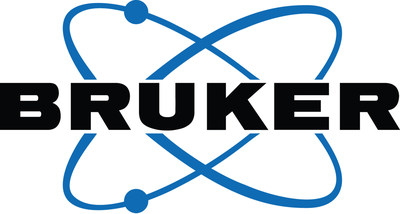
![]() View original content with multimedia:http://www.prnewswire.com/news-releases/bruker-introduces-scimax-mrms-for-novel-phenomics-workflows-and-further-enhances-the-timstof-pro-for-pasef-proteomics-at-asms-300658709.html
View original content with multimedia:http://www.prnewswire.com/news-releases/bruker-introduces-scimax-mrms-for-novel-phenomics-workflows-and-further-enhances-the-timstof-pro-for-pasef-proteomics-at-asms-300658709.html
SOURCE Bruker Corporation
 Der finanzen.at Ratgeber für Aktien!
Der finanzen.at Ratgeber für Aktien!
Wenn Sie mehr über das Thema Aktien erfahren wollen, finden Sie in unserem Ratgeber viele interessante Artikel dazu!
Jetzt informieren!
Nachrichten zu Bruker Corpmehr Nachrichten
|
04.11.24 |
Ausblick: Bruker gewährt Anlegern Blick in die Bücher (finanzen.net) | |
|
05.08.24 |
Ausblick: Bruker stellt Zahlen zum jüngsten Quartal vor (finanzen.net) |
Analysen zu Bruker Corpmehr Analysen
Aktien in diesem Artikel
| Bruker Corp | 57,86 | 0,70% |
|